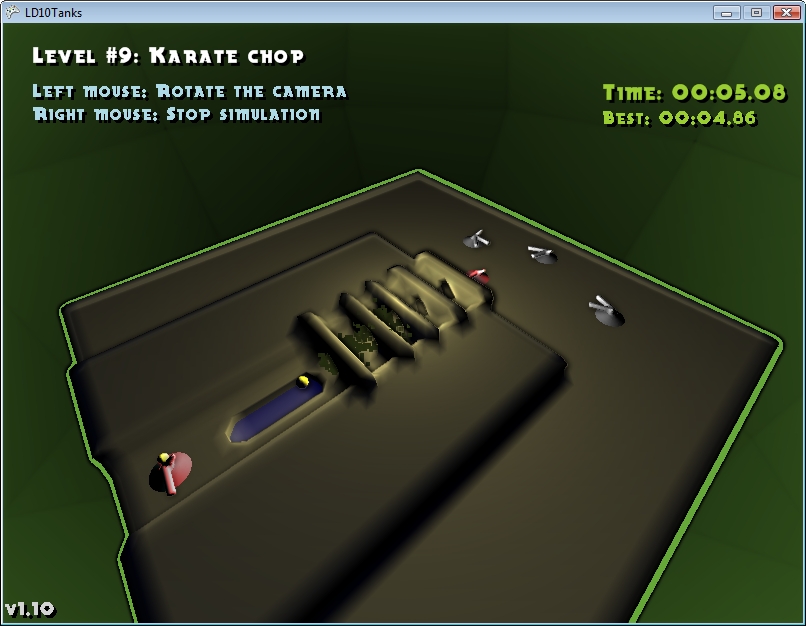LD10Tanks
| Date of creation: | 15.12.2007 - 17.12.2007 |
| Platform: | XNA (PC) |
| Licence: | GPL |
| Sources: | Yes |
| Description: | This is an entry for the 10th bi-annual Ludum Dare LD48h game programming competition. The point is to make as good a game as you can in 48 hours, alone. I think I did pretty well this time, though I didn’t get much sleep. :) The theme for the competition was chain reaction. LD10Tanks is a game where you set up a field with cannons. You can move some cannons and you can rotate them all. Then you start the chain reaction by shooting one cannon. If a bullet hits another cannon, it fires too. The objective is to have every cannon shoot all their bullets in one big chain reaction. Also if a bullet hits a wall, it will destroy a part of it. Each level has a high score for your best time. Some technical details (more in the included Readme.txt file). All the meshes are generated using constructive solid geometry (CSG). A mathematical model is generated (currently out of spheres, boxes and cones/cylinders) describing the whole world. The a marching cubes algorithm is ran over the model to teseslate the scene geometry. This allows for deformable meshes, such as the terrain here (some volumes are solid, some are cutting volumes). I also wanted to try some sort of fancy post processing filer, and I came up with this fake fake-SSAO (ScreenSpace Ambient Occlusion). The basic idea was taken from some forum (found by google). I basically estimate the ambient term on each pixel by comparing the depth at the pixel with the blurred depth at the same pixel (so I blur the depth field). It’s not perfect, but for example on this screenshot you can see some nice shading in the small holes. I also made a level editor in .NET 2.0 (C#) and used that to craft these levels. The level editor is included in the package. |
| Download: | Final compo version, around 4.4mb Older version (around 4.3mb) |
| Screenshot: |  |